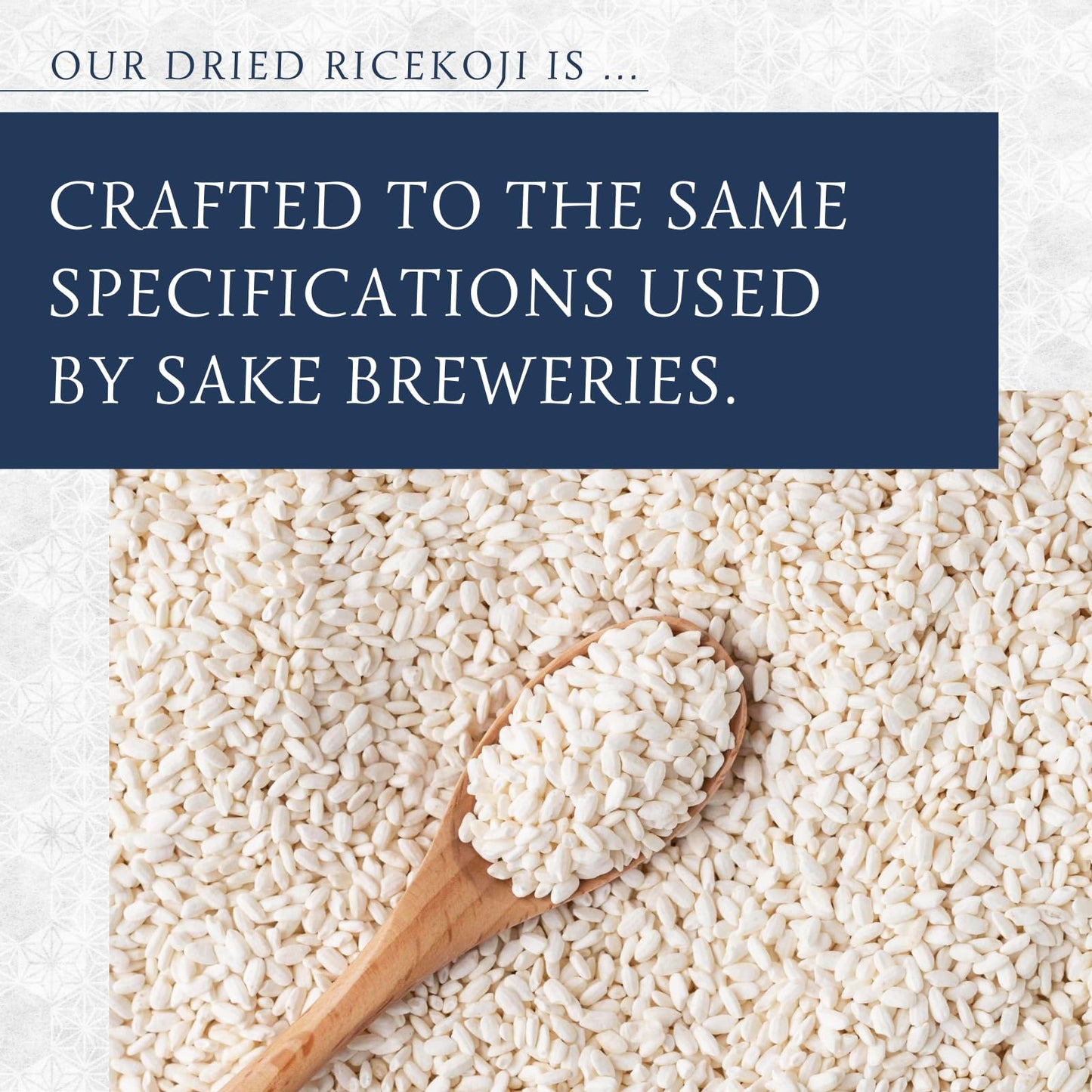You will not be allowed to compare more than 4 products at a time
View compareProduct Description
Our Dried Rice Koji Is Crafted From Carefully Cultivated Japanese Rice, Grown Using Natural Methods Chosen By Farmers To Ensure Exceptional Quality. This Koji Is Particularly Well-Suited For Making Shio-Koji Or Amazake, Offering The Perfect Foundation For Fermentation. We Are Committed To Sharing The Richness Of Koji And Japanese Hakko (Fermentation) Culture, With The Aim Of Bringing ''Deliciousness'' And ''Happiness'' To Our Customers, And Ultimately Fostering A Culture Of Fermentation With Rice Koji.
Frequently Asked Questions
- Q: What is dried rice koji and how is it used? A: Dried rice koji is a fermentation starter made from steamed rice inoculated with koji mold. It is commonly used in Japanese cuisine for making shio-koji, amazake, and other fermented products, enhancing flavors and adding nutritional benefits.
- Q: How should I store dried rice koji to maintain its freshness? A: To keep your dried rice koji fresh, seal the package tightly after opening, store it in a dry place, and consume it within one year from the manufacturing date for the best flavor and quality.
- Q: Is the dried rice koji suitable for everyone, including children? A: Yes, our dried rice koji contains no synthetic additives, making it safe and suitable for everyone, including children, allowing you to incorporate it into various family-friendly recipes.
- Q: What are some culinary uses for dried rice koji? A: Dried rice koji can be used in a variety of culinary applications, such as making homemade amazake, koji-based seasonings, koji natto, or fermented sweet bean paste, providing endless possibilities for delicious dishes.
- Q: What makes your dried rice koji different from other brands? A: Our dried rice koji is crafted from carefully cultivated Japanese rice using natural farming methods, and we employ a traditional technique called 'Yukigura Shikomi' to enhance flavor, ensuring a premium quality product for your fermentation needs.












